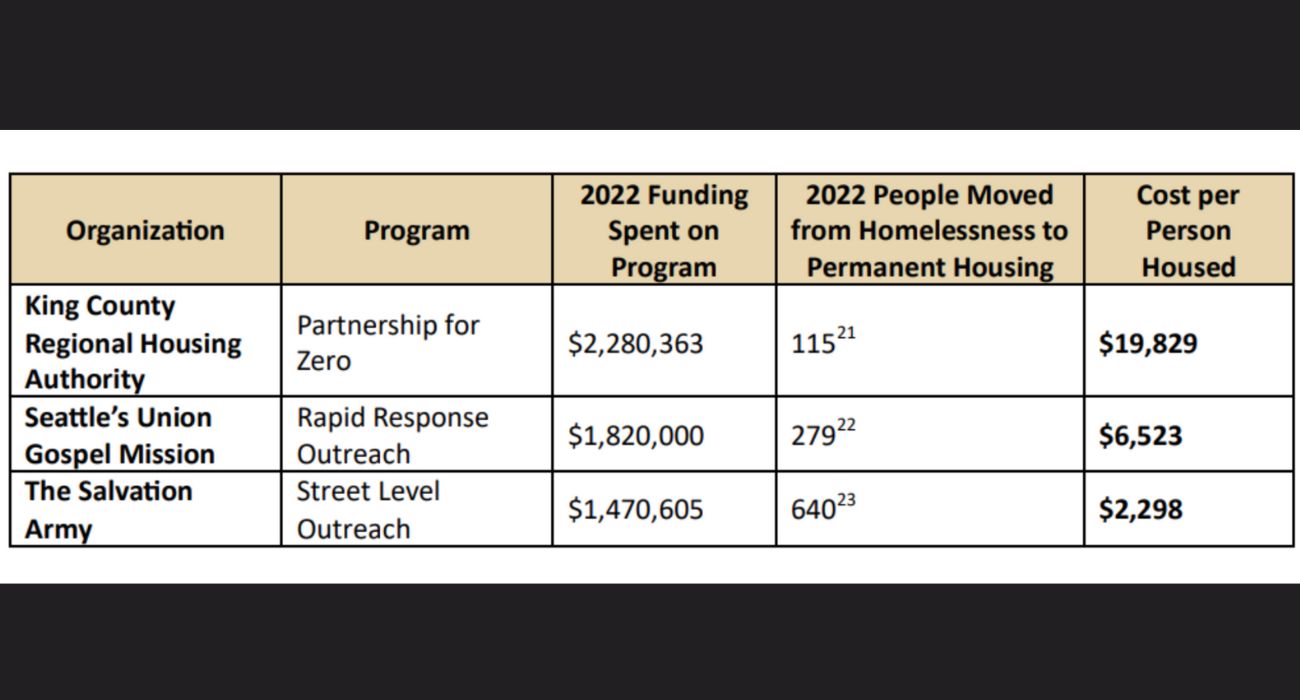A government homelessness outreach program in the Seattle area failed to make a dent in the city’s homelessness crisis despite having $11 million in funding, much of which remains unaccounted for.
“Partnership for Zero” was launched in February 2022 by King County in Washington with the goal of solving homelessness in the Seattle area. However, the program was shut down in September of last year after being considered a failure. Seattle Mayor Bruce Harrell described the shutdown as a “disappointing end result.”
A report was subsequently released titled, “Homelessness Data Reveal Reasons for Collapse of King County Outreach Program,” by The Center on Wealth & Poverty, which found that Partnership for Zero housed a fraction of the people nonprofits did while spending exponentially more taxpayer money.
Caitlyn Axe, the report’s author, spoke with The Dallas Express about her findings.
“In 2022, King County set up the King County Regional Homelessness Authority (KCRHA), which takes federal funding, state funding, and city and county funding, then disperses it out to address homelessness,” she said. “They did something a little unusual … They also decided to start their own outreach program: Partnership for Zero.”
Partnership for Zero had $10 million of funding behind it from taxpayers and the private sector, including companies like Starbucks and Boeing and philanthropic organizations like the Bill and Melinda Gates Foundation, according to Axe. A year after it launched, its funding reached a total of $11 million.
Axe explained that outreach programs are usually run by nonprofits, making this program “unique” as it entailed the county managing homelessness outreach on its own.
“The CEO at the time of KCRHA said [that] with this program, we can reduce the number of homeless people in Seattle to 30 … King County has over 13,000 homeless people,” said Axe. “So we were shocked by that kind of statement, and obviously, it didn’t go according to plan for them either.”
Partnership for Zero did not significantly reduce the number of homeless people in the area, according to the report, despite having so much capital.
“In a year, with the $10 million investment, they permanently housed about 115 people,” said Axe. “We don’t know if those people are still housed. We don’t know where they were housed.”
Axe’s report compares the results of Partnership for Zero to non-profit homelessness outreach programs in the Seattle area, finding that the non-governmental enterprises housed more people at a fraction of the cost.

Axe said that “a huge portion” of the funding that was directed to Partnership for Zero still “remains unaccounted for.”
The framework of Partnership for Zero was the federally-backed strategy of Housing First.
“It [was] mostly getting vouchers and putting people into government-subsidized or government-owned housing,” said Axe, describing Seattle as a “steadfast supporter and investor” in the Housing First model.
As previously reported by DX, Housing First has been heavily criticized by experts for failing to address the root causes of homelessness, such as mental illness and drug addiction. Axe agreed that Housing First fails in these areas and “essentially becomes a housing-only policy.”
She explained that if the underlying policy is flawed, a program will fall short regardless of how many millions of dollars are poured into it.
“If it’s just a bad strategy to begin with and doesn’t address what’s really preventing people from staying housed and staying healthy, you’re going nowhere,” she told DX.
“We’re confident that the reason Union Gospel Mission and The Salvation Army [are] so much more successful in housing people is that they are addressing the root causes of homelessness like addiction, broken relationships, and mental illness … I don’t think that was happening at all through the government.”
Axe said she hopes the failure of Partnership for Zero serves as a “wake-up call” for Seattle, King County, and other local governments.
“You need to be accountable for [taxpayer] money,” she said, adding that governments must be transparent with how taxpayer money is spent and be able to show the results of the initiatives those dollars are funding.
“We need to be able to prove effective results [and] have data that allow us to make wise, business-minded decisions about who gets funding … and what programs we invest in,” Axe told DX. “At a broader level for other cities, I think this is a good case study into why more money is not always the solution or almost never the solution, and that goes back to the Housing First policy.”
Housing First has also been blamed for a recent spike in the homeless population in Texas, as reported by DX.
Meanwhile, in Dallas, more than 75% of residents have said they are dissatisfied with the state of homelessness, vagrancy, and panhandling in their neighborhoods and throughout the city, according to prior polling.
One strategy that has found success is the “one-stop-shop” model of Haven for Hope, which has been credited with a 77% reduction in unsheltered homelessness in downtown San Antonio.
The one-stop-shop model has polled favorably among Dallas residents but has not yet been established locally. Some local stakeholders are working to deploy the model in Dallas, as previously discussed on The Dallas Express Podcast.
However, whether local officials will support this effort remains to be seen.


